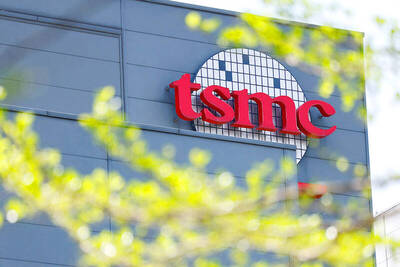Weeks of debate over what the government considers exorbitant fees bureaucrats will have to pay Microsoft Corp for use of the Windows operating system culminated yesterday at Computex Taipei 2002 in an call by lawmakers for the development of an open-source operating system..
"There are over 1.2 million computers in government offices in Taiwan, and the cost to load Microsoft software into those computers is NT$6,000 per unit," said Chen Chi-mai (
"The price we pay for software is the highest in the world," he said.
Taiwan is not able to get the same bulk rates on computer software as larger countries because the volume is too small.
But with China currently working on developing a Linux-based operating system for use in personal computers, officials hope Taiwan can do the same, or possibly even cooperate with China on the software, Wu Ming-ji (
The plan to use Linux in schools, launched two years ago, has met with little success since people in Taiwan rarely use the software. He said the government plans to begin training people to use the system in an effort to boost acceptance of open-source systems.
An operating system is considered to be open-source if its software code is transparent and freely available. Linux is such a software code.
Andrew Fann (
"Some people use it, mostly regular computer users and gamers," Fann said.
Government training may help, especially if Linux-trained teachers are sent into schools to work with students and staff, he said.
To boost Linux use in Taiwan, Sun Microsystems last week donated US$1.6 million in software to schools throughout the nation.
The software, dubbed "Star Office 6.0," is the latest release in a bundle of software meant to compete with Microsoft Office. It includes a word processing program, spread-sheet program and other software which can be used with Windows and Linux operating systems.
Files made using Star Office can also be used with Microsoft programs, a major condition to aid in its acceptance.
Officials in Taiwan complained that even if they were able to change wholesale to Linux-based systems, their computers would not be able to communicate or trade files with those on a Microsoft-based system.
Around 88 percent of computers here use Microsoft Windows, while only 8 percent run on Linux, said Victor Tsan (
Star Office 6.0 allows Linux users to communicate with and share files with those using Microsoft Windows.
Executives from two of the companies promoting Linux said that convincing people to dump Microsoft would not be easy. But they said it would be worth putting more effort into developing open-source software for government use.
Discontent over the price of Microsoft products reached a crescendo during the recent government attempt to crack down on software piracy. A number of the government offices that will have to pay for Windows software have been unwittingly running illegal versions of it for years, said one observer who requested anonymity.

WEAKER ACTIVITY: The sharpest deterioration was seen in the electronics and optical components sector, with the production index falling 13.2 points to 44.5 Taiwan’s manufacturing sector last month contracted for a second consecutive month, with the purchasing managers’ index (PMI) slipping to 48, reflecting ongoing caution over trade uncertainties, the Chung-Hua Institution for Economic Research (CIER, 中華經濟研究院) said yesterday. The decline reflects growing caution among companies amid uncertainty surrounding US tariffs, semiconductor duties and automotive import levies, and it is also likely linked to fading front-loading activity, CIER president Lien Hsien-ming (連賢明) said. “Some clients have started shifting orders to Southeast Asian countries where tariff regimes are already clear,” Lien told a news conference. Firms across the supply chain are also lowering stock levels to mitigate

Six Taiwanese companies, including contract chipmaker Taiwan Semiconductor Manufacturing Co (TSMC, 台積電), made the 2025 Fortune Global 500 list of the world’s largest firms by revenue. In a report published by New York-based Fortune magazine on Tuesday, Hon Hai Precision Industry Co (鴻海精密), also known as Foxconn Technology Group (富士康科技集團), ranked highest among Taiwanese firms, placing 28th with revenue of US$213.69 billion. Up 60 spots from last year, TSMC rose to No. 126 with US$90.16 billion in revenue, followed by Quanta Computer Inc (廣達) at 348th, Pegatron Corp (和碩) at 461st, CPC Corp, Taiwan (台灣中油) at 494th and Wistron Corp (緯創) at

NEGOTIATIONS: Semiconductors play an outsized role in Taiwan’s industrial and economic development and are a major driver of the Taiwan-US trade imbalance With US President Donald Trump threatening to impose tariffs on semiconductors, Taiwan is expected to face a significant challenge, as information and communications technology (ICT) products account for more than 70 percent of its exports to the US, Chung-Hua Institution for Economic Research (CIER, 中華經濟研究院) president Lien Hsien-ming (連賢明) said on Friday. Compared with other countries, semiconductors play a disproportionately large role in Taiwan’s industrial and economic development, Lien said. As the sixth-largest contributor to the US trade deficit, Taiwan recorded a US$73.9 billion trade surplus with the US last year — up from US$47.8 billion in 2023 — driven by strong

ASE Technology Holding Co (ASE, 日月光投控), the world’s biggest chip assembly and testing service provider, yesterday said it would boost equipment capital expenditure by up to 16 percent for this year to cope with strong customer demand for artificial intelligence (AI) applications. Aside from AI, a growing demand for semiconductors used in the automotive and industrial sectors is to drive ASE’s capacity next year, the Kaohsiung-based company said. “We do see the disparity between AI and other general sectors, and that pretty much aligns the scenario in the first half of this year,” ASE chief operating officer Tien Wu (吳田玉) told an